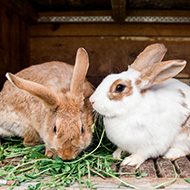Lingering pollutant problem revealed
.jpg)
The English Channel is home to one of the last remaining large European populations of bottlenose dolphins.
The English Channel is home to one of the last remaining large European populations of bottlenose dolphins. A study, published in the journal Scientific Reports, has found some of the highest recorded levels of toxic chemicals and mercury in the bodies of bottlenose dolphins off the French coast.
Researchers took tissue samples from more than 80 dolphins living in waters off Normandy and Brittany. They found high concentrations of mercury in skin and polychlorinated biphenyls (PCBs) in their blubber.
Worryingly, other industrial chemicals, such as dioxins and pesticides, were also found in blubber samples, and these pollutants are passed down from mother to calf. "Our results indicated the important transfer of PCBs by females to their young, which may raise concern for the population," said the team of researchers led by Dr Krishna Das of the University of Liege, Belgium.
According to Rob Deaville, from the Zoological Society of London, who is involved with the UK Cetacean Strandings Investigation Programme, the study endorses data from wider investigations of strandings.
"As apex predators, bottlenose dolphins are at higher risk of exposure to some of the chemicals mentioned in this study – and as many of the European coastal populations of bottlenose dolphins are relatively small in size, they may, therefore, be under greater conservation threat," he said.
PCBs, used in plastics, paints and electrical equipment, were banned several decades ago, but persist in the environment, where they can build up in the blubber of dolphins and whales.
The chemicals have been found in the blubber of bottlenose dolphins washed up on beaches around Europe.
The scientists say the bottlenose dolphin's habitat – an area known as the Normanno-Breton Gulf – should become a special area of conservation to protect the population.



 Rabbit Awareness Week (RAW) is returning this summer, running from 24-28 June 2024. The theme for this year will be 'Healthy Diet, Happy Bunnies'.
Rabbit Awareness Week (RAW) is returning this summer, running from 24-28 June 2024. The theme for this year will be 'Healthy Diet, Happy Bunnies'.